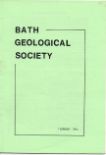Geology of Connemara

Central Connemara is made up of Dalradian rocks - Late Precambrian to Cambrian - which have suffered polyphase deforma- tion and metamorphism. These are overlain unconformably in the North by Ordovician and Silurian rocks, in the South by Ordovician strata and to the East by the Carboniferous.
Correlation between Connemara, Donegal and Scotland is facili- tated by certain marker horizons, in particular the Clew Bay Boulder Bed - a tillite - which extends into NE Scotland.
The original sediments were a varied shallow-water sequence of shales, sandstones, limestones and impure calcareous rocks. Basalt lavas or dolerite sills were intercalated in the sequence.
The Precambrian-Cambrian rocks were then deformed and metamor- phosed in a series of phases, the Grampian orogeny at the end of the Cambrian beginning of the Ordovician. The first three deformation phases produced mainly isoclinal folds with predominantly axial plane schistosity and with F1 and F3 having E-W trending axes. D4 gave rise to the E-W Connemara Antiform which controls the regional dips. The resulting metamorphic rocks are marbles, impure marbles, calc silicates, pelites, psammites, semi-pelites, siliceous granulites, calc granulites, quartzites, pebbly grits and amphibolites.
Metamorphism was generally of high grade and increased towards the south from staurolite zone in the north to upper sillimanite in the south and ultimately, near to the intrusive Connemara migmat- tites, to a K-feldspar zone with incipient anatexis. Late uplift reduced the pressure but kept temperatures fairly high resulting in the formation of andalusite. An exception to this are the chlorite zone rocks of the Ballyconneely area which are thought to have been retrogressed along a major thrust which has pushed Connemara some 50-80 km towards the SE from its original position off Donegal.
Temperatures of metamorphism varied from about 550°C to 700°C and pressures from about 4-5 Kb.
Important members of the Dalradian succession are the Connemara Migmatites which, according to Leake, are part of a series from ultra basic - basic intrusive bodies (such as Cashel and Dawros) to intrusive migmatites such as the quartz-andesine bodies and ultimately the K-feldspar gneisses. It is suggested that these form a differentiation series from one magma body and that they were intruded during D2 deformation over a long period of time, developing a foliation. The ultrabasics were emplaced 510 My ago.
The metamorphic rocks are intruded by a set of post-tectonic granites the oldest of which is the Oughterard Granite (460 My), a regular body the main outcrop of which is in the east but which occurs as irregular pods throughout much of the area. No thermal metamorphism is associated with this granite whereas, of the younger ones, the Omey Island granite has given rise to an aureole. In particular and the Omey Island granite has marked the to sillimanite hornfels and to the spectacular grossular-andradite- diopside-wollastonite rock.
The topography closely reflects the lithology and structure, with the higher mountains, eg Twelve Bens and Maumturks, being made of quartzite while the Clifden-Oughterard valley and the Derryclare Lough-Lough Inagh valley are floored by the Lakes Marble group.
